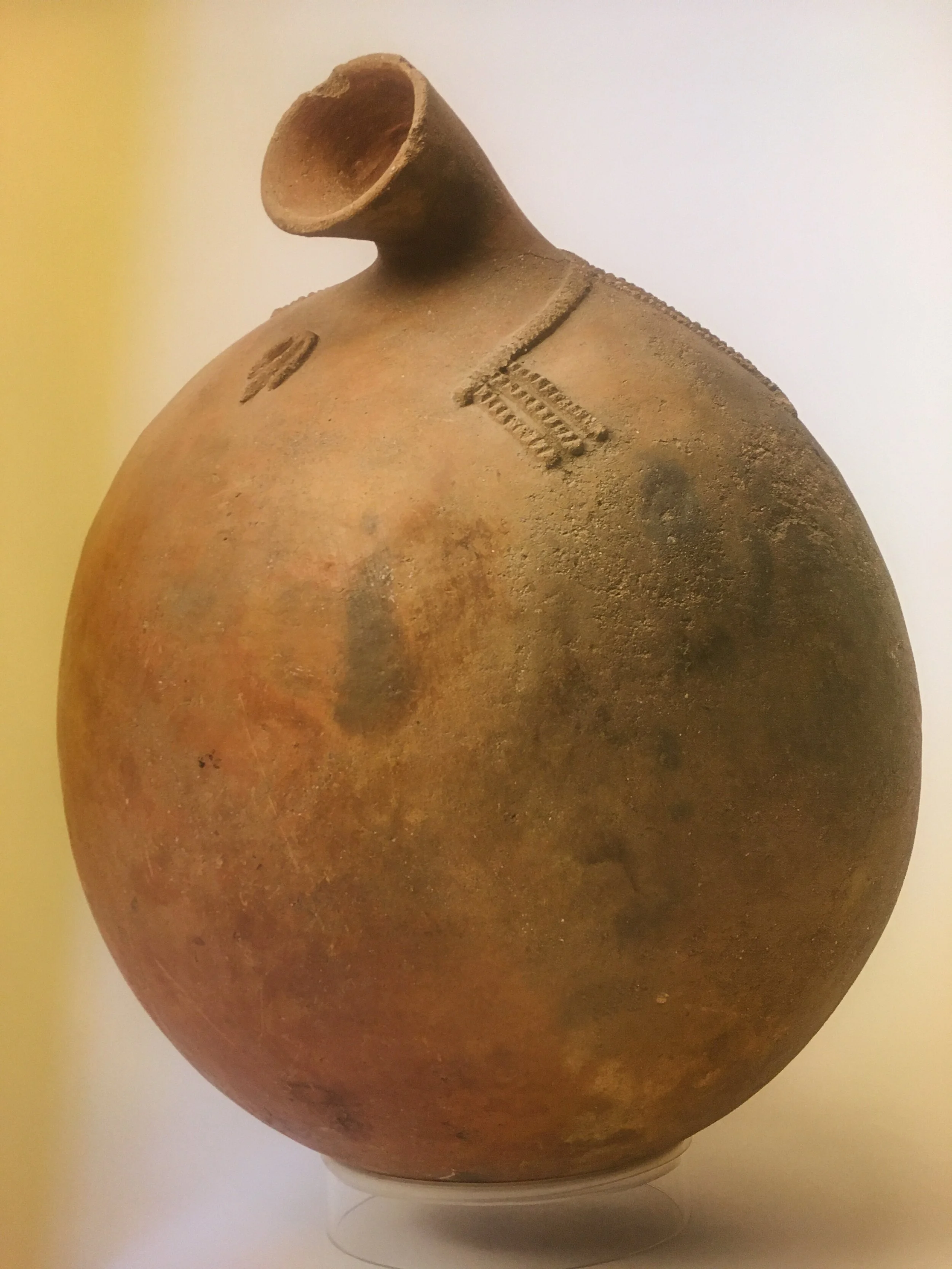First thoughts on African Pottery
(…) a pot does not become a work of art only if a sculptor or painter had some part in its making. Pottery does not rely upon sculptured ornament or painted decoration to qualify as art; it relies upon its own counterpoint of form, colour, texture and ornament all directed towards a particular purpose. Admittedly, that purpose is usually domestic, but pottery is no less art for that.”
WIlliam Fagg & John Picton, The Potter’s Art in Africa.
This, however, has not been the spirit with which pottery has historically been studied and looked at; but quite the opposite. The generally gender-biased Western studies of African pottery date back to the 15th century when European, Arab and American men wrote the early historical accounts of the African societies they visited. They were traders, explorers, missionaries, colonial administrators and anthropologists whose gaze disregarded pottery as they thought it didn’t have any financial or cultural value. They didn't consider it ‘art’ and consequently, neither did their audiences in their home countries, where African pottery was restricted to ethnographic and natural history museums were they stereotyped as ‘primitive’, ‘tribal artefacts’ or ‘crafts’. A viewpoint still debated today.
African pottery is mainly hand-built by women, fired within their domestic compounds so that they can combine their making with their domestic chores. Their pots are mostly used in the everyday life of agricultural communities and their artistic expression is restricted to form and surface texture. As the Western man travelled through Africa, given their limited access to women’s activities and compounds, they took pottery for granted and considered it a conservative craft as opposed to metalwork or wood carving, which, no wonder, almost universally are male trades.
The result? Pottery is overlooked, women’s crafts are belittled and disregarded in favoured of highly developed practises where pots are wheel-thrown and high-fired, that is, made by men.
The wheel was introduced in sub-Saharan African in the 16th century in Angola by the Portuguese colony and in South Africa by the 18th century. Colonial and post-colonial development projects began introducing these technologies in other regions of Africa such as Ghana and Nigeria in the mid 20th century, often with led by Western potters trained in the Anglo-oriental studio traditions.
Some female scholars began to question these traditional views on pottery and to promote and research its cultural values in the late 19th century:
Barbara Bodichon (1827-1891) was a British feminist, writer, educator and artist who was determined to present examples to the V&A Collection.
Diana and Antoinette Powell-Cotton (1930s) recorded, photographed and filmed potters in Angola.
Margaret Trowell (1903-1985) wrote books on African art and craft.
Sylvia Leith Ross (1884-1980) developed major studies on Nigerian pottery.
This notwithstanding, the general Western narrative has marginalised African pottery specifically - and women’s arts in general, as it is made evident when visiting the Ceramics Rooms at the Victoria and Albert Museum. Among the zillions of pots on display, only a corner is dedicated to African pottery and only to pay tribute to Michael Cardew’s contribution to Nigerian pottery.
Zulu Beer Vessel. Uphiso H: 380mm
Skeuomorphic Calabash Bottle, Kirdi Culture (probably), Chad. Late 19th - mid 20th c.
This blog entry is part of the research behind my project Baney Clay: An Unearthed Identity. Take a look here!
SOURCES:
‘African ceramics: a different perspective, from the collection of Franz, Duke of Bavaria’. by Angelika Nollert, Pinakothek der Moderne (Munich, Germany)
‘Nigerian pottery: in an African context’ by Michael O'Brien, University College of Wales (Aberystwyth, Wales).
‘The potter's art in Africa’ by British Museum. Department of Ethnography., William Fagg, John Picton
‘Zulu beer vessels in the twentieth century: their history, classification and geographical distribution’ by Frank Jolles



